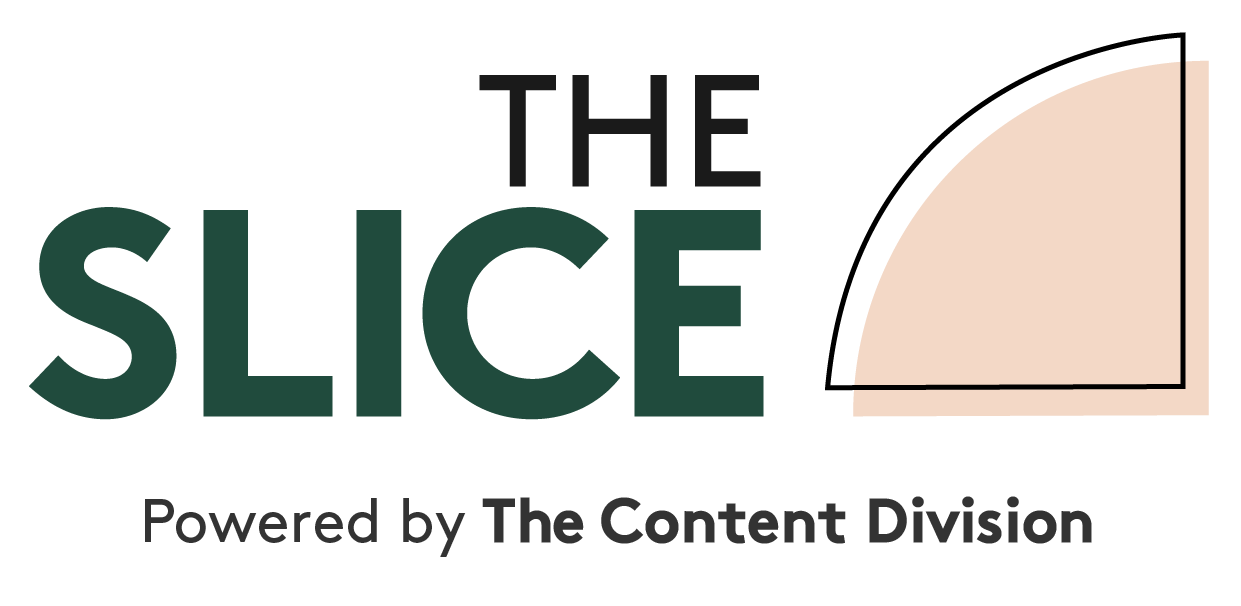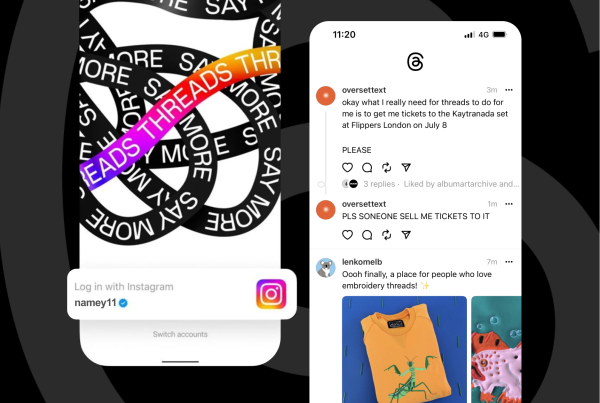
Walkley Award winner Baz McAlister shares his tips for writing the perfect headline.
Known for his witty and attention-grabbing headlines, Baz is a three-time winner and seven-time finalist of Queensland’s Clarion Awards for journalism. In 2019, he won the Walkley Award, Australia’s most prestigious journalism honour. He says his knack for a great header is both a blessing and a curse.
“I can’t turn my brain off or even wind it down from thinking about wordplay,” he says. “Even when I’m talking to someone, I’m working away in the background, thinking of finding something funny or clever to say – a joke, a pun or an innuendo.
“I’m always trying to connect what I hear to everything else I’ve ever heard – idiomatic phrases, famous sayings, movie quotes, fables, pop culture references, advertising slogans, lyrics from songs, anything that could form the basis for a joke.”
Luckily, you don’t have to suffer from a mild form of apophenia to construct a great headline. And that’s just as well, because it’s a skill that content creators are going to be increasingly expected to master.
“As more and more news organisations get leaner, reporters are more often expected to build their own stories for online, add their own photos and captions, and crucially write their own headlines,” Baz says. “And that’s not as straightforward as it sounds.”
The problem, Baz says, is that most people aren’t good at selling themselves.
“A lot of reporters I know are fantastic at their jobs, but they’re wonderfully humble beings and they’re not great at selling themselves,” he says. “And primarily, when you’re writing a headline, you’re selling the story. You want to get as many eyeballs as possible on the words below the headline. Writing a headline is sometimes the closest a reporter will come to being in the advertising and marketing game.”
The fundamentals of headline writing
While there are directions that apply specifically to writing headlines for online content, Baz says there are also some fundamental rules that you need to understand whether you’re writing headlines for print or the web.
“As far as I’m concerned, headlines have one job,” he says, “and that’s to get the reader to want to read the story they’re pointing to. The best ones do this like a big flashing neon sign offering something irresistible. But imagine you saw a big flashing neon sign that said ‘FREE BEER’ and you walked into the place and yes, there was free beer, but it was a thimbleful per customer. Of XXXX Gold. It’s technically true, but you’d feel cheated. You’d probably be angry.
“So you can’t get too fanciful with a headline – the story has to deliver on what the headline promises. So this one job that headlines have actually has two parts: they have to both TELL the story and SELL the story.
“And there can actually be a very delicate balance between these two aspects. Because with the SELL, you want to bring out the big guns to get eyes on the story, but with the TELL, you cannot tell the reader everything they need to know in the headline, or they’ll skip reading the actual story. You have to preserve some mystery, but at the same time, the headline has to be accurate and truthful.”
Baz has some simple but essential pointers for creating an effective headline, regardless of the medium:
- Find the drama in the story and showcase it in your headline. “The main driver of story is conflict,” he says, “so if there is one, you’ll want to make sure the source of any conflict is played up in a headline.”
- Pull out the key words from the first three paragraphs and play around with them. “If the story is written in inverted pyramid style [with information presented in descending order of importance], pretty much all the key words you need to pay heed to when writing your headline will be in the first three paragraphs or so,” Baz says. “I find it helpful to pull these out and write them down and use them as a kind of ‘word cloud’ to work off when brainstorming your headline ideas. You’ll be able to see which words work with each other, and where you might be able to substitute synonyms, and so on.”
- If you’re not the author of the story you’re attaching a headline to, make sure you actually understand it. “I’ll admit, I’ve had some baffling business stories to deal with,” Baz says. “Don’t be red-faced if you have to go to the writer and ask for a bit of clarity. It might even help fix the story up to be clearer to the layperson.”
- Use active voice and present tense. “Make the headline feel like it’s happening NOW,” Baz says, “even if the story underneath it is written in past tense.”
- Eliminate unnecessary words where possible. “Aim for nouns and verbs,” Baz says. “MAN BITES DOG. BOY SWALLOWS UNIVERSE. Keep your verbs short and punchy.”
- No question marks in headlines. “Any headline you have to put a question mark on the end of is a headline that can be answered with ‘no’,” Baz warns. “If your headline reads ‘Have we found Daniel Craig’s replacement as James Bond?’, well, no, you haven’t. If you had, you’d have said, ‘This guy replaces Daniel Craig as James Bond’.”
Baz says American journalism professor Dr Merlin Mann’s acronym, TACT, is a good rule of thumb.
T – Is it in good Taste?
A – Does it Attract the reader’s attention?
C – Does it communicate with Clarity? Are there any confusing or odd words, or any possible double meanings you’ve missed?
T – Is it True?
How to write great headlines for the web
When it comes to writing headlines for online content, Baz says it’s better to lean towards providing too much information than providing too little.
“That’s chiefly because of SEO,” he says. “Because you’re writing a headline that you’re trying to get as far up the search engine listings as possible via the inclusion of keywords, you’re essentially trying to write a headline that will please a human and please a search engine algorithm at the same time. It’s hard, and frankly not as much fun, but it’s the future.”
While the basic principles of writing headlines for print carry over to the web, Baz says SEO will change the way you structure an online header.
“Most importantly, you want to include key words and phrases in the headline that relate to the subject of your story,” he says. “Put yourself in the mind of a punter and think about what you would Google if you were after information on that subject.
“Popular search terms tend to include a lot of names – of places, companies, teams, groups and the like – so you can direct a lot of traffic to your story by loading your headline with those. Personal names are also important. It’s best to use both given name and surname together in an SEO-friendly headline, which is a big difference from print, which will generally only use surnames, and only if they’re on the rarer side.
“If you’re writing a headline for an opinion column where the author is well known enough to be a likely search term in their own right, load that into your headline too, separated with a colon, and you’ll get more hits.
“That said, you should still aim to be as sparing as you can. We’ve all seen online headlines hitting 20 or 30 words long, and while that might boost them up some search engine’s algorithmic chart, it’s ugly, unwieldy, clumsy and altogether not pleasing to the eye.”
As tempting as it might be, Baz also says you should avoid transparent ‘clickbait’ headlines.
“Clickbait tends to leave a bad taste in people’s mouths,” he says. “When your headline flat-out challenges the reader with something like, ‘You won’t believe what Peter Dutton paid for his new house’, that’s just flat-out begging for a click. And your reader will end up feeling hoodwinked or disappointed by that kind of headline because, you know what, I probably will believe what Peter Dutton paid for his new house because he’s loaded.”
More and more, online headlines are being written based on what will get retweets – an unavoidable concession to the ubiquity of social media.
“This is a really important way that online headlines move through the news cycle,” Baz says. “People sharing a story largely helps determine which news goes viral and hangs around in the news cycle, and which is forgotten. Headlines alone can be really important in shaping the news agenda, because 6 out of 10 people who share links don’t even click on them to read the story. They’re basically sharing a headline.”
Baz points to a 2016 study by computer scientists at Columbia University and the French National Institute that showed 59% of the links shared on social media were not clicked on by the person sharing them. In other words, most people retweet or share news without actually reading it.
“In their minds, the six-, seven- or eight-word headline sums up and reinforces their viewpoint,” Baz says. “And because we are all beings made of ego now, advertising our stance on something is more important than understanding the nuances of it.”
Similarly, a 2019 Upworthy piece that ran under the headline, ‘Most domestic terrorism comes from white supremacists, FBI director tells lawmakers’ was shared and commented on thousands of times, despite the fact it was published with a dead link that didn’t go to the article, but instead to a 404 error page.
“I’m guessing the reason people didn’t bother clicking,” the article’s author, Annie Reneau, later wrote, “is because the headline was clear and descriptive and neatly summed up the story at a basic level.”
Reneau conceded that a less clear headline – “something like, ‘FBI director tells lawmakers that most domestic terrorists come from a specific group of Americans’” – would have made people click.
“But you know what we’d be accused of then? Clickbait. People would complain that we were being vague on purpose, just for clicks… if we write clear, concise, informative headlines, people don’t read the article. If we write vague headlines that leave people with questions, people complain about clickbait.”
It all comes back to Baz’s first fundamental rule of headline writing, the TELL and the SELL – ensuring that the headline is accurate and truthful, while preserving some mystery for the article.
It’s a delicate balance, but achieving it is the key to marketing online content successfully.





